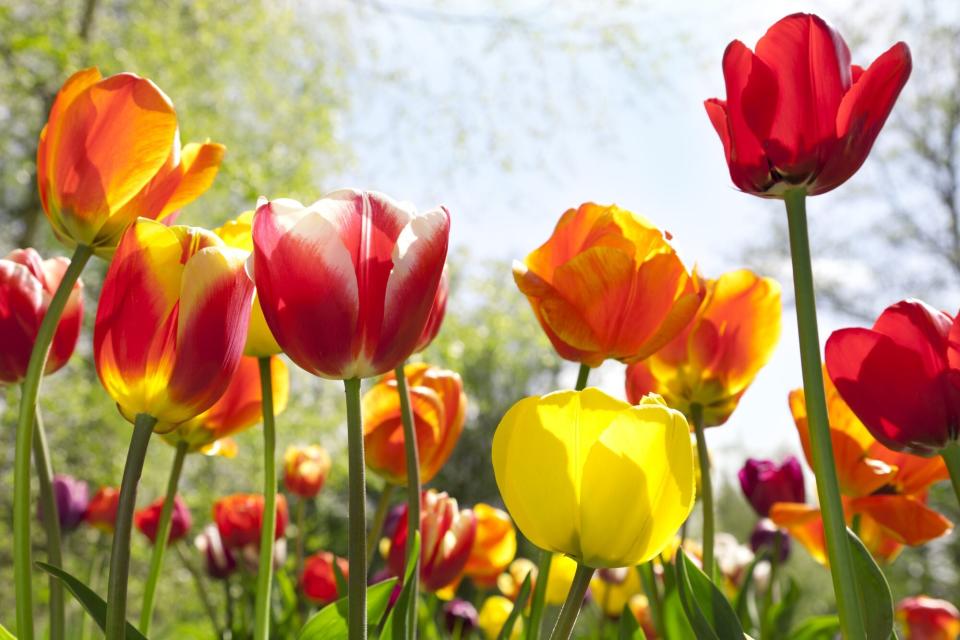Are Tulips Perennials? Here's Everything You Need to Know About the Pretty Spring Flowers, Including How Long They Last
Tulips are one of the most common spring blooms and are one of the first signs of the season. While their sudden burst of color is a welcome sight (warmer weather is on the way!), they don't actually last as long as we'd like them to. And, unfortunately, not all of our favorite tulip blooms will be back next year. Ahead, we explain the annual-perennial tulip connection and elaborate on their expected bloom times.
Related: How to Plant Tulip Bulbs

Steve Satushek / Getty Images
Not all tulips are perennials.
Tulips are technically perennials, says Peggy Anne Montgomery, a horticulturist with Flowerbulbs.com but not all varieties act like it. "The bulbs that you find at the store have often been hybridized or cross-bred," she explains, adding that some varieties, like Darwin Hybrids, Greigii, Kaufmanniana, and species tulips, are the best for perennializing. "These tulips should not be used as cut flowers, but should be left intact to die back and replenish the bulb," she says. If you plan to snip some of these stunners to brighten your indoor spaces, know that you are running the risk of not seeing them again next year.
Tulips have specific needs.
It may seem like flowers that are hardy enough to make their first appearance during the last gloomy days of winter would be able to withstand anything, but Montgomery says that the process of hybridization has prevented some varieties from remaining perennial bloomers. "Imported to North America from their native Central Asia centuries ago, tulips require a particular set of growing conditions and fertilization needs that fluctuate throughout the year in order to be perennial," she explains. "Some growers (famously those in Holland) have perfected the year-round care of these particular perennials, but doing so in the various climates and conditions of North America can be challenging to home and professional gardeners alike."
Read the label on your bag of bulbs.
If you're wondering whether the bulbs you've purchased are going to come back next year, Montgomery says finding the answer should be as easy as reading the fine print on the bag. "Fortunately, there are some varieties you can spot at the store that are labeled 'perennializing' or 'naturalizing.' Bags of bulbs or online catalogues will be appropriately labeled," she notes. These varieties have been specially bred to suit the North American climate, shares Montgomery, and will thrive—and should come back in greater numbers next year. "You won't be able to tell if a flower in the ground is perennial or not, so you'll need to check the label at the time of purchase," she notes.
Tulips stick around for two weeks, on average.
Unfortunately, you will only get to enjoy your tulip blooms for roughly two weeks in colder weather (under 60 degrees, according to Montgomery); that timeline gets shorter as the mercury dips. "Extending the magnificent tulip bloom timeline in your garden is absolutely possible, but it takes a bit of planning in the fall," she explains. She suggests planting a myriad of varieties in the fall that will bloom at different points come spring. "For a display that spans a month (or potentially more!), plant a mix of early, mid-, and late-blooming tulips in your garden," she suggests. "While each one will only last a week or two, new blooms from the next wave will emerge to take their place, giving you a colorful show that lasts all spring long!"

